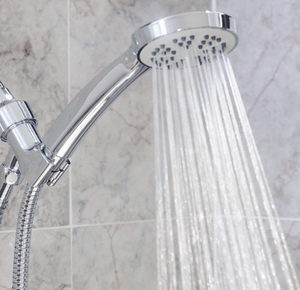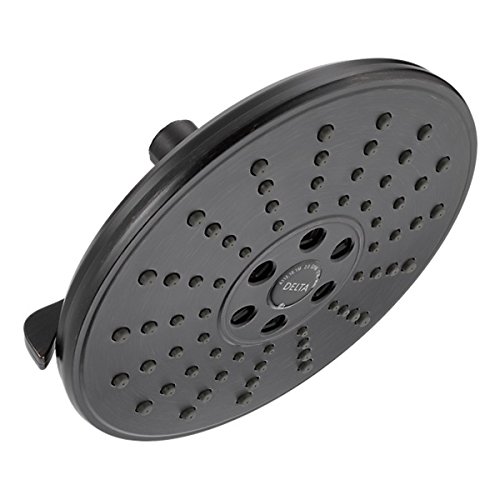You can’t avoid common shower head problems. That’s because shower heads are an essential component of any bathroom.
They provide a refreshing and relaxing showering experience. However, shower heads can develop problems over time, and these issues can affect the quality of your shower.
If you’re experiencing shower head problems, don’t worry; most of them are easy to fix. Let’s talk about common shower head problems and how to troubleshoot them.
Low Water Pressure
Low water pressure is a common problem with shower heads, and it can be caused by several factors.
First, check the shower head for any blockages, such as mineral buildup or debris. If you notice any blockages, remove the shower head and soak it in a mixture of equal parts vinegar and water for an hour.
After soaking, scrub the shower head with a toothbrush and rinse it thoroughly.
If the shower head is clean, the problem may be with your plumbing system.
Check other faucets in your home to see if they have low water pressure. If they do, the issue may be with your water supply or plumbing system. In this case, you should contact a plumber to diagnose and fix the problem.

Leaking Shower Head
A leaking shower head can be frustrating, and it can also waste water and increase your water bill.
If you have a leaking shower head, the first step is to check the connections. Tighten any loose connections, and if the leaking persists, check the rubber washers inside the shower head.
If the washers are worn or damaged, you’ll need to replace them. Remove the shower head and take it apart to access the washers. Replace the washers with new ones and reassemble the shower head.
If the leaking continues, the problem may be with the shower valve, and you’ll need to contact a plumber to fix the issue.
Clogged Shower Head
If you notice that your shower head isn’t spraying water evenly, or if the water flow is weak, the problem may be a clogged shower head. Mineral buildup and debris can clog the tiny holes in the shower head, affecting the water flow.
To fix a clogged shower head, remove the shower head and soak it in a mixture of equal parts vinegar and water for an hour.
After soaking, scrub the shower head with a toothbrush and rinse it thoroughly. If the clog is stubborn, use a pin to gently remove any debris from the tiny holes.
Water Temperature Problems
If you’re experiencing inconsistent water temperature or fluctuating water pressure, the issue may be with your shower valve. The shower valve controls the water temperature and pressure, and a faulty valve can cause problems.
If you suspect that the shower valve is the issue, contact a plumber to diagnose and fix the problem. The plumber may need to replace the shower valve or repair it, depending on the severity of the issue.
A Few More Common Shower Head Problems
Rusty Shower Head
If you notice rust on your shower head, it’s time to replace it. A rusty shower head can be unsightly, and it can also affect the water quality. Rust can also weaken the shower head, making it more prone to leaks and other issues.
When choosing a new shower head, look for one made of stainless steel or other rust-resistant materials. These materials are durable and long-lasting, and they’ll provide a refreshing showering experience.
Squeaky Shower Head
A squeaky shower head can be annoying, but fortunately, it’s an easy fix. The most common cause of a squeaky shower head is a loose connection between the shower head and the pipe.
To fix this issue, tighten the connection with a wrench or pliers. If the squeaking persists, try applying some plumber’s tape to the threads of the connection to create a tighter seal.

Unusual Shower Head Noises
If you hear unusual noises coming from your shower head, such as rattling or humming, the problem may be with the water pressure.
High water pressure can cause unusual noises in the plumbing system, including the shower head. To fix this issue, you may need to install a pressure-reducing valve in your plumbing system. This valve will regulate the water pressure and prevent unusual noises in the shower head and other plumbing fixtures.
Shower Head Spray Direction
If your shower head is spraying water in the wrong direction, the issue may be with the shower arm or the swivel ball joint.
The shower arm connects the shower head to the pipe, and the swivel ball joint allows you to adjust the spray direction. If these components are loose or damaged, the shower head may spray water in the wrong direction.
To fix this issue, tighten the connections between the shower head and the shower arm. If the swivel ball joint is loose or damaged, replace it with a new one. You can find replacement parts at your local hardware store or online.
Poor Shower Head Performance
If you’re not satisfied with the performance of your shower head, such as the water flow or spray pattern, it may be time to replace it. Newer shower heads are designed to provide better performance and water efficiency, and they come in a wide variety of styles and features.
When choosing a new shower head, consider your preferences and needs.
- Do you want a high-pressure shower head or a rain shower head?
- Do you want a shower head with multiple spray patterns or a simple, straightforward design?
There are many options to choose from, so take your time and choose a shower head that meets your needs and preferences.
In summary, troubleshooting common shower head problems is relatively simple and straightforward.
By following these tips, you can fix most shower head issues and enjoy a refreshing and relaxing showering experience. Remember, if you’re unsure about how to fix a shower head problem or if the issue persists after troubleshooting, don’t hesitate to contact a professional plumber for help.
Shower head problems are common.
But don’t worry… because they’re also easy to troubleshoot.
